You can try the following formula in cell D2:
=LET(months, MONTH(D1:O1), dur, C2:C4, Qs, B2:B4,
QsUx, SORT(UNiQUE(Qs)), start, XLOOKUP(Qs, QsUx, SEQUENCE(ROWS(QsUx),,1,3)),
end, start + dur - 1,
GEN_X, LAMBDA(idx, MAP(start, end, LAMBDA(ss, ee,
LET(month, INDEX(months,,idx), IF(MEDIAN(ss, ee, month) = month, "x",""))))),
DROP(REDUCE("", months, LAMBDA(acc, m, HSTACK(acc, GEN_X(m)))),,1)
)
and here is the output:

Note: The formula generates the entire grid, there is no need to expand the formula.
Explanation
It uses the following two ideas:
The rest is just to prepare/transform the input data in the format we want. The LET function is used for easy reading and composition.
The row with the months: D1:O1 was generated in date format as follows:
=EDATE(DATE(2022,1,1), SEQUENCE(1,12,0))
Now the months variable will have the corresponding months via the MONTH function, it returns the following sequence of values: 1,2,..,12.
QsUx has the unique names of quarters sorted. Then we can calculate the start date as follow:
XLOOKUP(Qs, QsUx, SEQUENCE(ROWS(QsUx),,1,3))
SEQUENCE generates the following sequence: 1,4,7,..etc. (as many values as rows have QsUx). Representing the starting month of each quarter.
Note: This is just one approach. The start can be obtained, by extracting the number of the Quarter and building a sequence: 1, prev. value + 3, for example. Alternatively, since we have only four quarters just a simple constant array with all the Qs and their corresponding start dates. The approach used in the main formula is more generic because the Gantt can be expanded to more than one year and it still works.
Having the start date, then we can calculate the corresponding end date as follows: start + dur - 1.
The user LAMBDA function GEN_X generates the x's values for a given column of months indicated by the idx as input argument (representing the corresponding month).
Finally, we use the DROP/REDUCE/HSTACK pattern to append each column to complete the grid.
Note: The solution assumes no excel version constraints as per the tag listed in the question, so all existing excel functions are available. If you have some limitations for example you don't have the DROP function, let me know to try to find some alternative.
